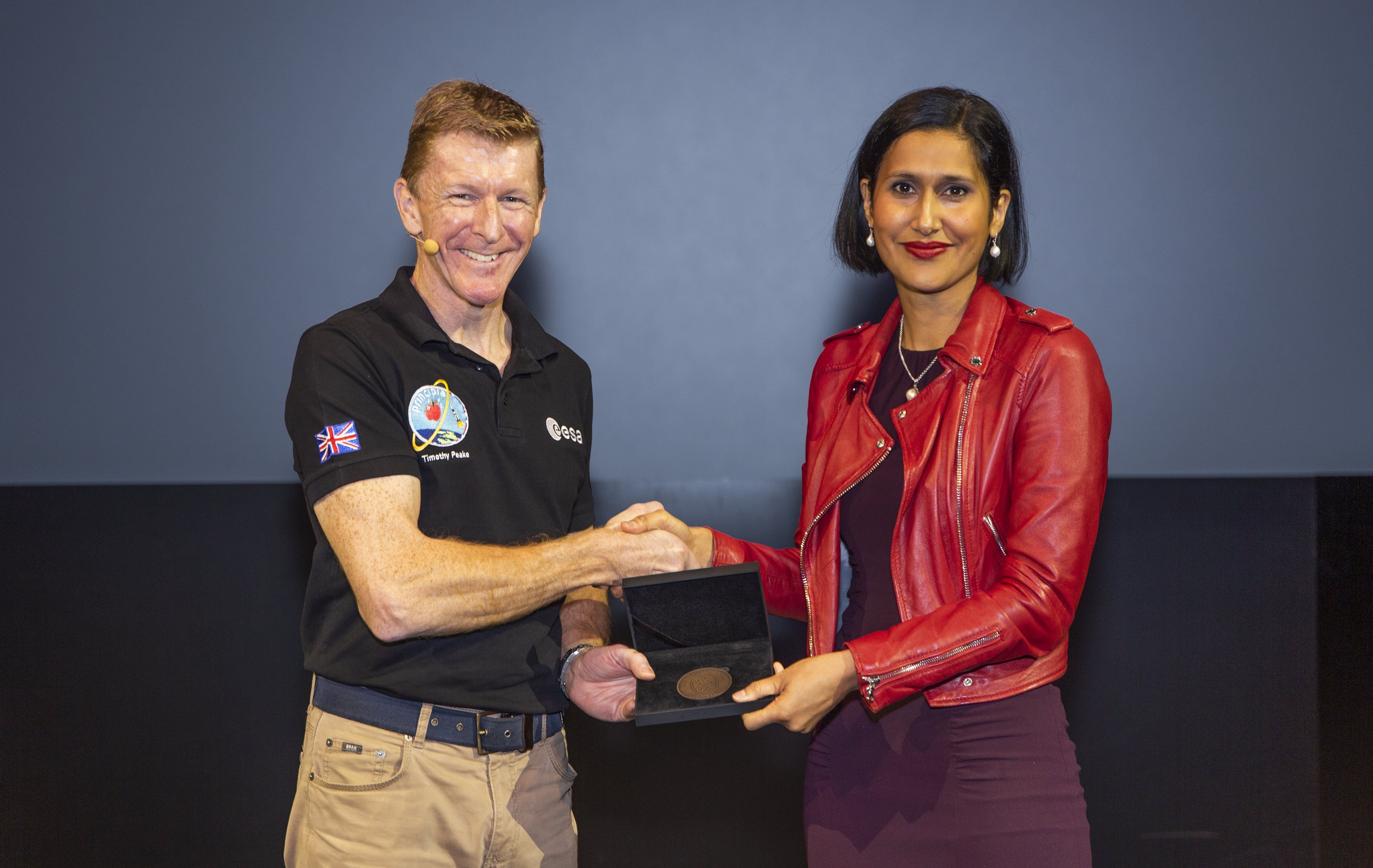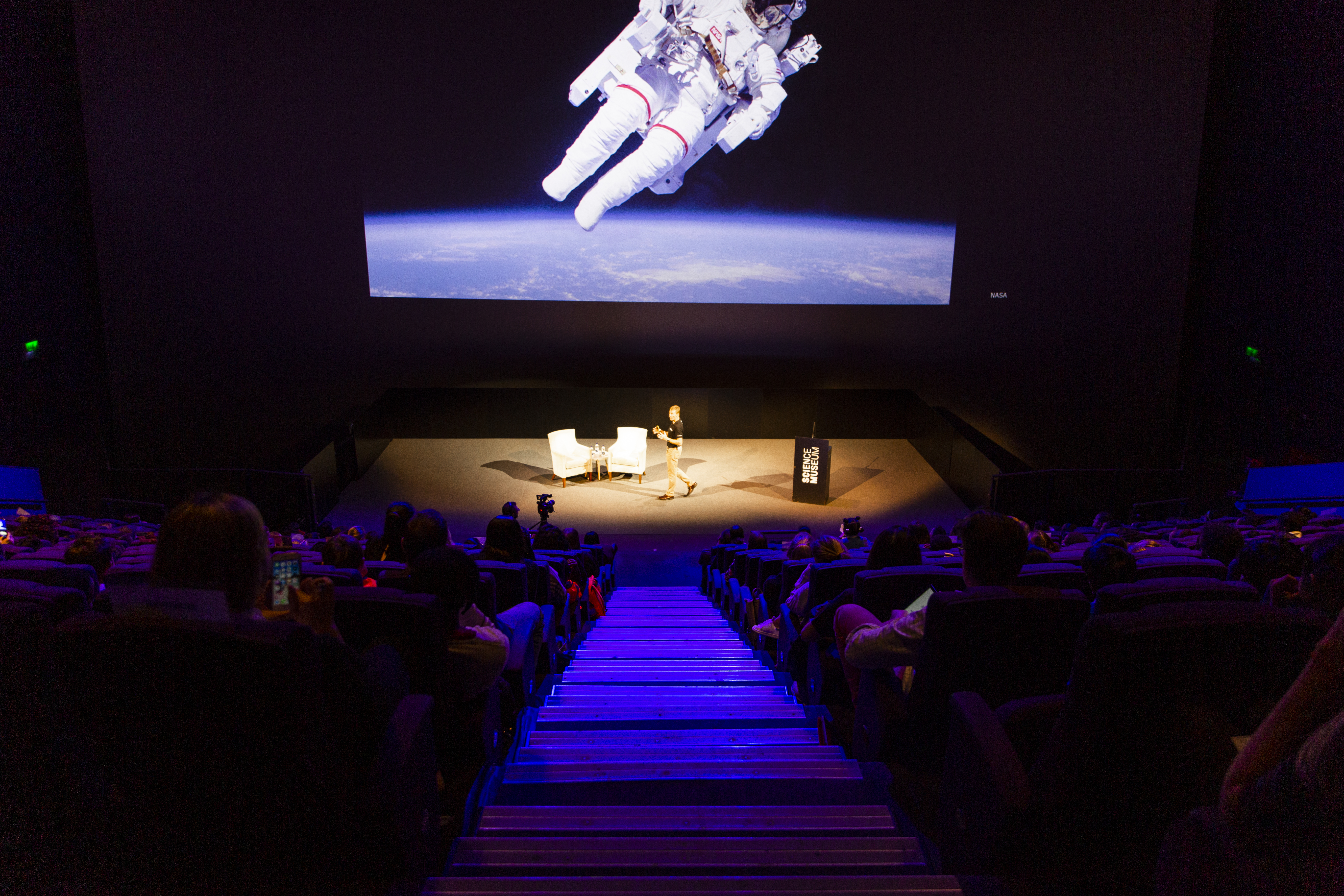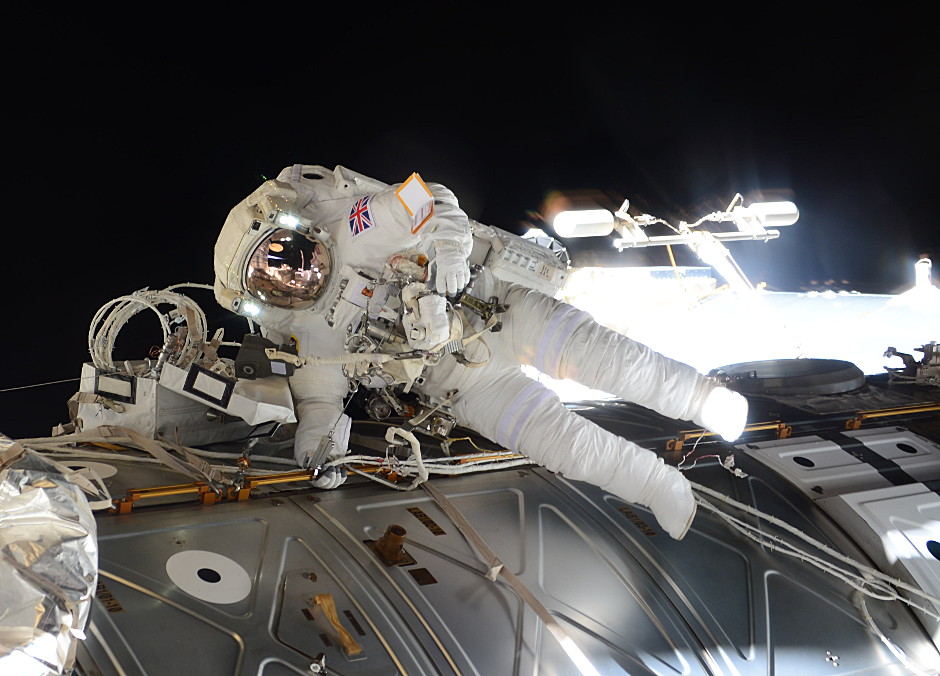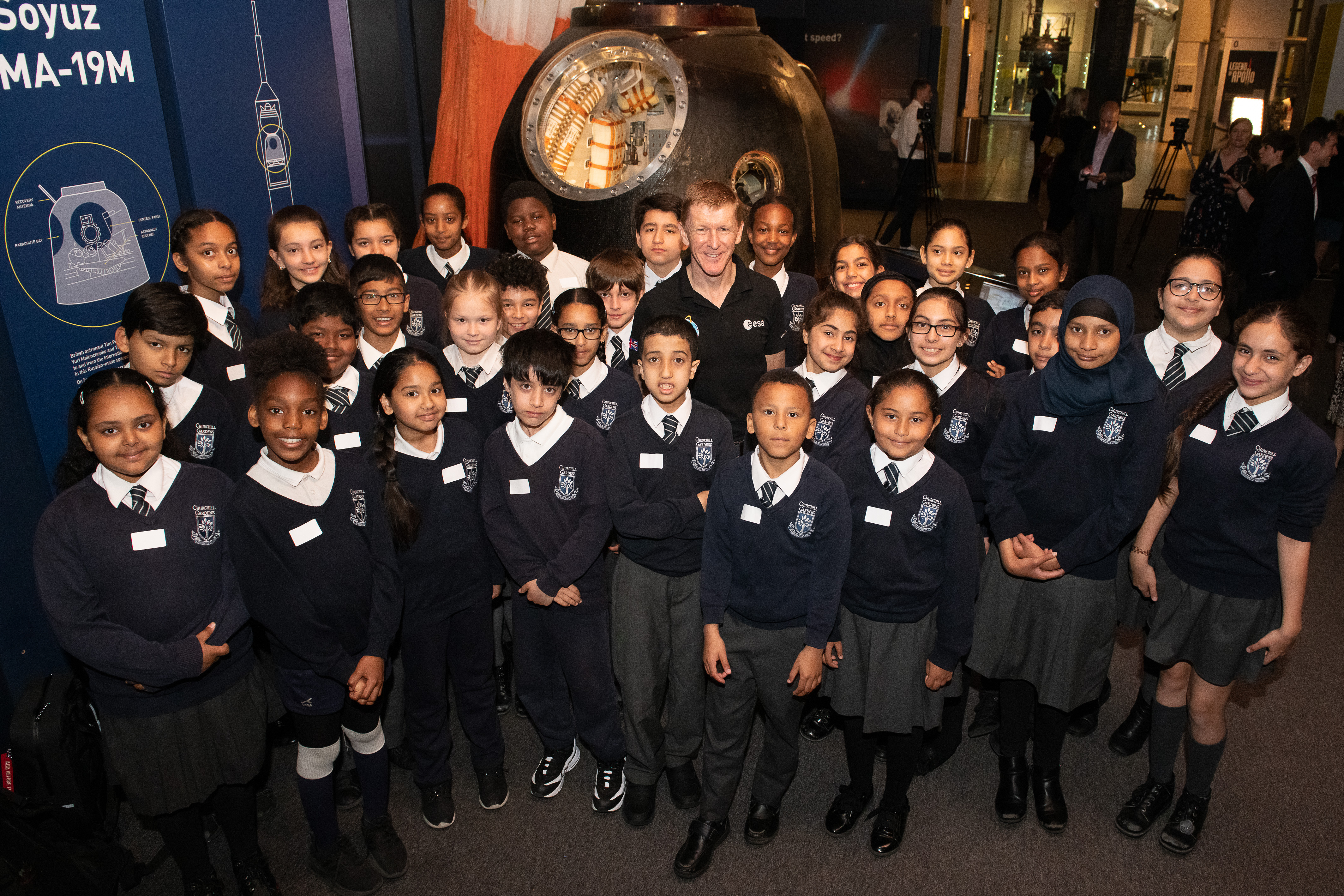The special event, hosted by the Science Museum in association with the Royal Academy of Engineering and the Raspberry Pi Foundation, saw Tim Peake presented with the Academy’s prestigious Rooke Award for Public Promotion of Engineering for his inspirational engineering and science engagement through the Principia mission’s education programme, the largest and most successful educational campaign ever organised to support a European astronaut mission.

The event opened with a preview of the Academy’s latest This is Engineering film showcasing the diversity of engineering careers, everything from fragrance sourcing to robotic farming, leaving the pupils keen to hear more. Next came a short video about Tim Peake’s journey into space, and the excitement was palpable as he arrived on stage.
Tim spoke at length about the gruelling training an astronaut needs to go through, and also the engineering that enabled his flight. Of course, there was the Russian Soyuz TMA-19M rocket that took him into space, but before he could fly, he had many hours of training on a simulator designed to present astronauts with all the scenarios that might occur in space.

The simulator, an impressive piece of engineering in its own right, could only take Tim so far. He could learn how to fly a spacecraft from the simulator, but it could not replicate what it would feel like inside the spacecraft. For that, he said, astronauts rely on what he called the “best fairground ride you could go on” the centrifuge, which spins so fast that training astronauts feel eight times their body weight in G-Force, preparing them for the sensation of a real launch.
Preparing for take-off is one thing. Preparing for life without gravity and going on six-hour-long spacewalks is quite another, and again engineering is vital. Spacewalking is a highlight for astronauts but working outside the spacecraft in orbit and in zero gravity presents many risks – most obviously falling off and floating out into space! They are equipped with jet packs, which they learn to control using virtual reality training systems.

Preparing the body for weightlessness also involves engineering – using a specially adapted aircraft, known as the ‘vomit comet’ that flies at high altitude and nose dives repeatedly, creating brief periods of near-weightlessness for training astronauts and conducting research.
The pupils’ most enthusiastic reaction to the high-tech engineering involved in space travel, however, was reserved for the toilet. Tim said that one of the most frequent questions he is asked is how astronauts use the bathroom. Yet what they might not realise is that the space loo is itself a great feat of engineering. For long trips to the Moon, or even to Mars, astronauts will need to be self-sufficient, recycling all their oxygen, all their water and growing their own food. The toilet on board the space station is already doing this – recycling 85% of astronauts’ urine into drinking water.

After Tim’s talk, three lucky school groups were invited to attend a special space-themed CoderDojo session in the Flight Gallery, where they were given an introduction to programming in a session led by the Raspberry Pi Foundation, a charity with a mission to put the power of technology in the hands of young people all over the world.
Before starting their challenge, the children were told how Raspberry Pi formed an integral part of Tim Peake’s space mission as two Raspberry Pi computers travelled to the International Space Station (ISS) with him on their own mission. These tiny computers, called Astro Pis, were used to measure the environment onboard the ISS, and give schoolchildren the chance to have their code run in space. To that end, the students were given their own Astro Pis and challenged to code them to send messages to the Astro Pi onboard the ISS to instruct it to check the current temperature in space.
Tim is passionate about inspiring young people with his experience of space and engineering. As the first British ESA astronaut to visit the ISS, he was keen to use the opportunity to inspire young people back in the UK. Onboard the ISS, through an educational outreach programme (Principia) of more than 30 projects, the mission inspired and engaged more than two million school children across approximately 10,000 schools – equivalent to around 15% of all school children and one in three schools in the UK.

It was for this incredible achievement that the Royal Academy of Engineering Chief Executive Dr Hayaatun Sillem presented Tim with the Rooke Award for “literally going above and beyond” in his mission to promote engineering and space to the next generation.
